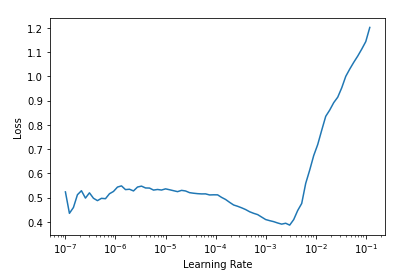Hello guys I have questions regarding Character-level language model I am implementing to practice.
After reading some documentation I got a Datablock working
#One txt file is the source
def get_file(path):
with open(path/"100as_cleaned.txt", "r") as infile:
text = infile.read()
n = 1000
return [text[i:i+n] for i in range(0, len(text), n)]
as100 = DataBlock(blocks = TextBlock(tok_tfm = lambda txt: list(txt),
is_lm=True),
get_items = get_file,
splitter=RandomSplitter(valid_pct=0.3, seed=42))
xb, yb = next(iter(dls.valid))
xb.size(), yb.size()
(torch.Size([64, 72]), torch.Size([64, 72]))
However, I get and the following error if I try
dls.show_batch()
AttributeError Traceback (most recent call last)
<ipython-input-19-90634fcc3c9e> in <module>()
----> 1 dls.show_batch()
6 frames
/usr/local/lib/python3.6/dist-packages/fastai2/data/core.py in show_batch(self, b, max_n, ctxs, show, unique, **kwargs)
93 if b is None: b = self.one_batch()
94 if not show: return self._pre_show_batch(b, max_n=max_n)
---> 95 show_batch(*self._pre_show_batch(b, max_n=max_n), ctxs=ctxs, max_n=max_n, **kwargs)
96 if unique: self.get_idxs = old_get_idxs
97
/usr/local/lib/python3.6/dist-packages/fastcore/dispatch.py in __call__(self, *args, **kwargs)
96 if not f: return args[0]
97 if self.inst is not None: f = MethodType(f, self.inst)
---> 98 return f(*args, **kwargs)
99
100 def __get__(self, inst, owner):
/usr/local/lib/python3.6/dist-packages/fastai2/text/data.py in show_batch(x, y, samples, ctxs, max_n, trunc_at, **kwargs)
111 @typedispatch
112 def show_batch(x: LMTensorText, y, samples, ctxs=None, max_n=10, trunc_at=150, **kwargs):
--> 113 samples = L((s[0].truncate(trunc_at), s[1].truncate(trunc_at)) for s in samples)
114 return show_batch[TensorText](x, None, samples, ctxs=ctxs, max_n=max_n, trunc_at=None, **kwargs)
115
/usr/local/lib/python3.6/dist-packages/fastcore/foundation.py in __call__(cls, x, *args, **kwargs)
39 return x
40
---> 41 res = super().__call__(*((x,) + args), **kwargs)
42 res._newchk = 0
43 return res
/usr/local/lib/python3.6/dist-packages/fastcore/foundation.py in __init__(self, items, use_list, match, *rest)
312 if items is None: items = []
313 if (use_list is not None) or not _is_array(items):
--> 314 items = list(items) if use_list else _listify(items)
315 if match is not None:
316 if is_coll(match): match = len(match)
/usr/local/lib/python3.6/dist-packages/fastcore/foundation.py in _listify(o)
248 if isinstance(o, list): return o
249 if isinstance(o, str) or _is_array(o): return [o]
--> 250 if is_iter(o): return list(o)
251 return [o]
252
/usr/local/lib/python3.6/dist-packages/fastai2/text/data.py in <genexpr>(.0)
111 @typedispatch
112 def show_batch(x: LMTensorText, y, samples, ctxs=None, max_n=10, trunc_at=150, **kwargs):
--> 113 samples = L((s[0].truncate(trunc_at), s[1].truncate(trunc_at)) for s in samples)
114 return show_batch[TensorText](x, None, samples, ctxs=ctxs, max_n=max_n, trunc_at=None, **kwargs)
115
AttributeError: 'L' object has no attribute 'truncate'


